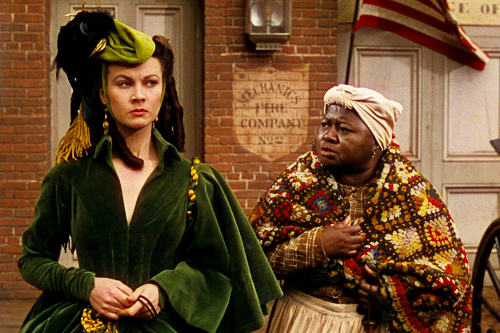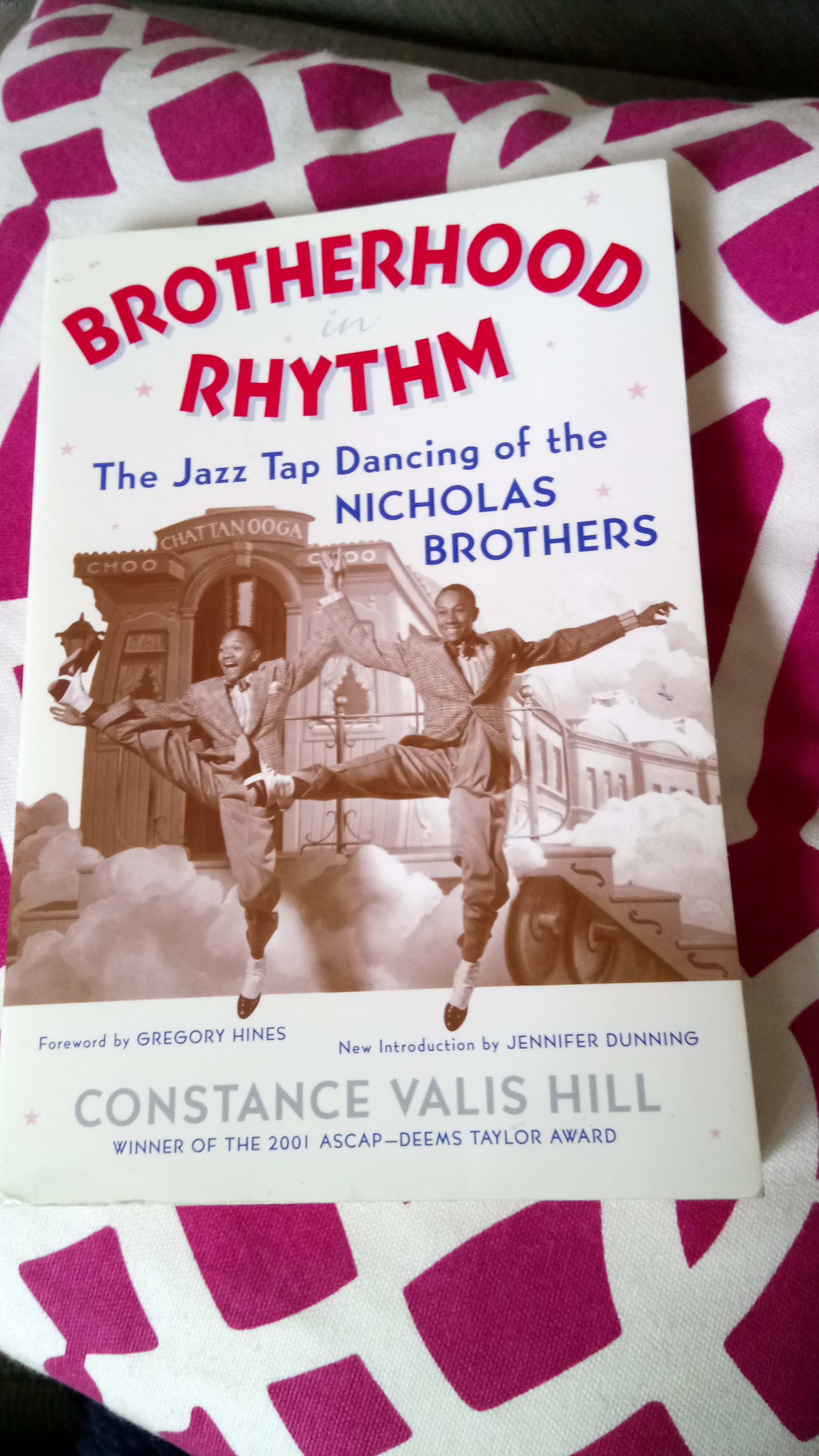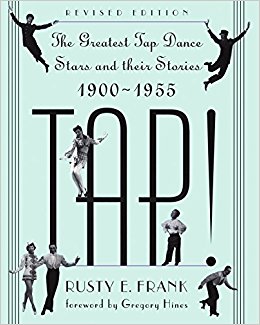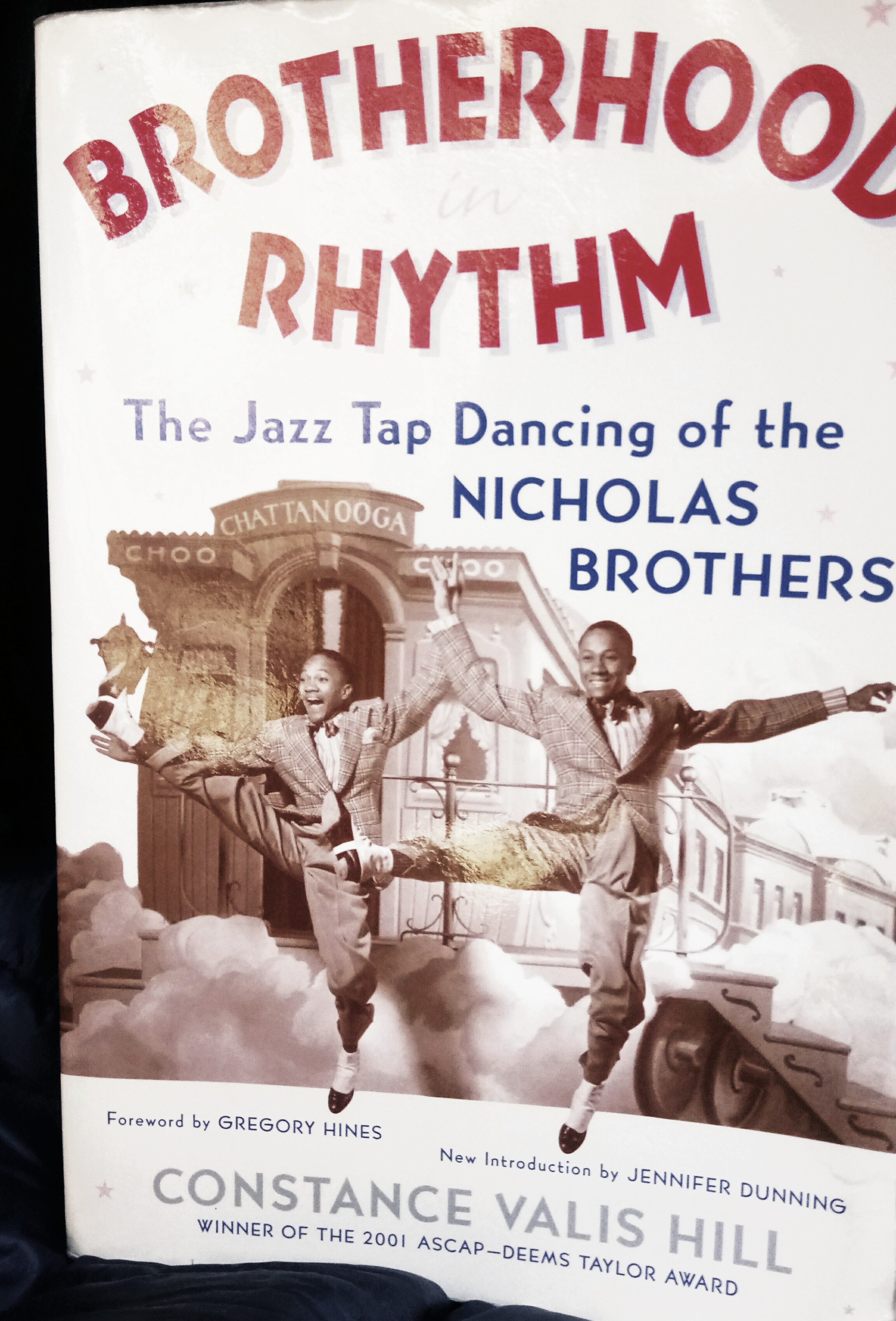
Last week I finally finished Brotherhood in Rhythm: The Jazz Tap of the Nicholas Brothers by Constance Valis Hill (2000). I bought a second hand copy which is full of scribbles and I may go back over it and make some scribbles of my own!
Beginning with a foreword by the late, great Gregory Hines, Valis Hill takes us through history from the origins of jazz music and dance to the early heroes of tap dance, such as Bill ‘Bojangles’ Robinson and Leonard Reed. She then takes us to Chicago in the early 1920s and introduces us to the bright young brothers Fayard and Harold Nicholas, their family and their ambitions at emulating these early jazz tap acts and then going even further with their own unique class act style.
There are 10 chapters literally bursting with information. The overarching theme in this biography of the tap dancing brothers is the unfortunate backdrop of racial segregation in America up to the 1960s.
One of the stand-out dance acts of all time, they were grossly overlooked in Hollywood once they had reached an age where old enough to be considered a threat to segregated societal norms (i.e. no possible suggestions of sexuality, no hints at interracial relations, and certainly no being the star in a film made for white audiences) they were relegated to being a novelty act and never really got the mainstream recognition they deserved. It was much easier to keep them in the role of boys and keep feeding the minstrel show stereotypes. (It brought to mind the servile and deliberately non-threatening Mammy next to the glamorous Scarlet O’Hara in Gone with the Wind).
I found it really interesting that a movie many people know the Nicholas Brothers for – Down Argentine Way (1940) – would have been censored for Southern white audiences so that the brothers’ amazing dance sequence was cut from the showing. Crazy! However, it remained in the version shown in cinemas and people loved it! Today that dance sequence is actually the part of the movie that people want to see (check it out on YouTube – fabulous).
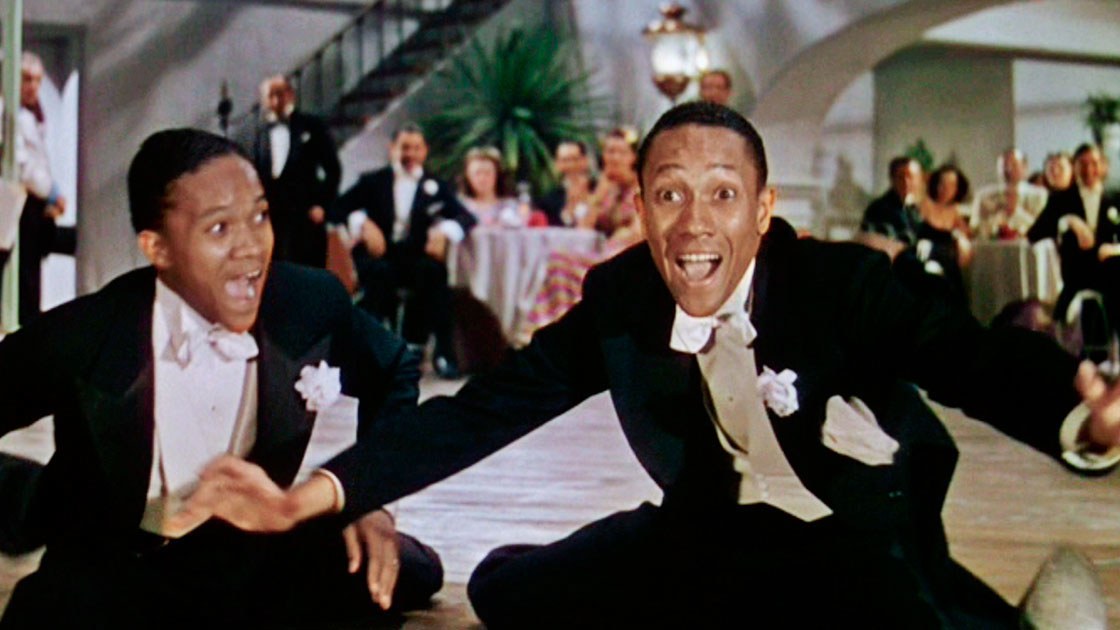
The good news is that Harold and Fayard went to Europe, which was was more open-minded and they experienced great success in places like the UK and France (particularly Paris), but the US didn’t give them the dues they deserved. Sad times.
We’ve all heard of Fred Astaire and Gene Kelly, but ask your average Joe if they’ve heard of the Nicholas Brothers, and they’d probably say “who?” A CRIME in history as far as I’m concerned!
Gene Kelly, Fred Astaire, Ginger Rogers dance on air
Madonna, Vogue (1990)
Although it took me a while to get into it, I found Brotherhood in Rhythm an enjoyable, extremely informative book to read, with lots of detailed facts and musical counts and ‘dee-dee-dahs’ to digest (yes, really). A great historical record of the Jazz Age and all things Nicholas, including a little of their personal lives, but without the gossip aspect. There are also quotes littered throughout from hoofers, dancers and musicians that will be of interest to tap dancers and jazz enthusiasts. There is a helpful glossary at the end of the book to explain various terms used in the book such as “Legomania”:
Highly individual and unusual leg movements in jazz dancing, such as rubber-legging.
A goal of mine for a long time was to master the splits. Well, after reading about Fayard Nicholas’s hip replacement…I’m not so sure!
Verdict: Warm, wordy, wow!
